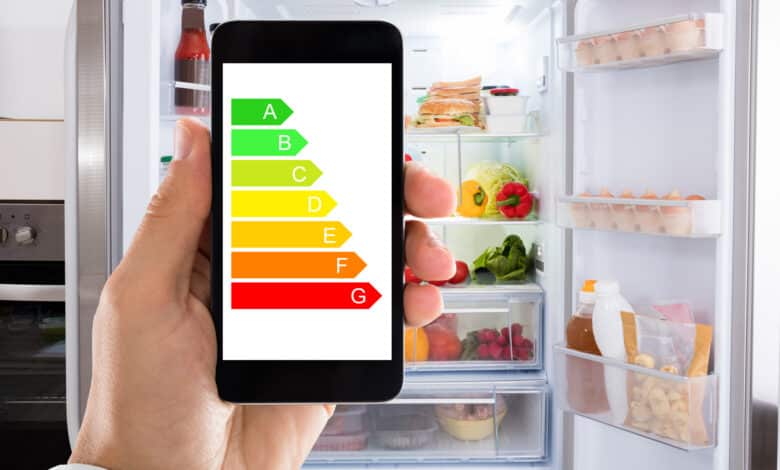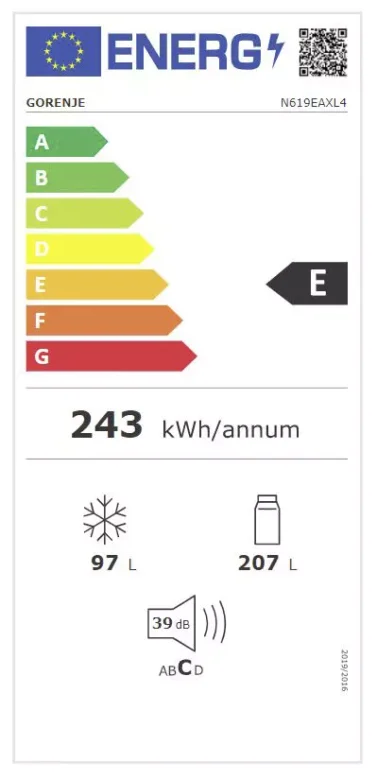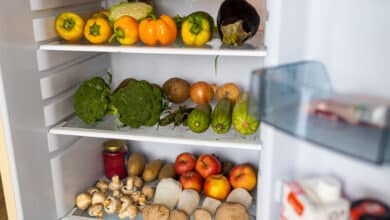
Electricity is one of the most important, if not the most important source of energy in our everyday lives. In addition to using electricity for heating (where there are often better alternatives), it is the driving force behind almost all household appliances and also provides the lighting in our living spaces. However, due to the constant rise in electricity prices in recent years, it has become important to look at the energy consumption of one’s household appliances – especially appliances that run virtually continuously, such as the refrigerator. You can get the relevant background knowledge on the subject of “refrigerator power consumption” here.
The energy consumption label
The energy consumption label, also known as EU label or appliance label, must now be mandatory on the part of the manufacturer or seller on certain household appliances such as the refrigerator. It is intended to inform you about the energy efficiency class when buying and to help you quickly find the most economical appliance. The energy efficiency class is therefore decisive for the purchase of a refrigerator, as it significantly determines the power consumption. The small label is uniformly designed throughout Europe and clarifies the customer about the most important consumption values.
The energy efficiency classes
Household appliances are currently divided into seven energy efficiency classes, which are labeled with the letters A to G. The class A is the most economical class. Class A is the most economical energy efficiency class, while devices with class G consume comparatively much electricity. However, devices with energy efficiency classes A to C are hardly available in stores today; classes D to G are currently still the standard.
So when buying a new refrigerator, be sure to look for a favorable energy efficiency rating, as it can save you a significant amount of money on electricity costs. So that the customer gets a quick overview, the energy efficiency classes are highlighted on the label by colored arrows.
Basically, all of the following household appliances must be classified in energy efficiency classes: Washing dryers, washing machines, room air conditioners, exhaust air dryers, lighting, dishwashers, electric ovens, and refrigerators and freezers. Lamps are also divided into energy efficiency classes. This is calculated here from the power and the luminous flux.
How is the energy efficiency class for an appliance determined?
The classification takes place with a new equipment on the part of the manufacturer over the so-called energy efficiency index (EEI). For this purpose, the power consumption of a reference device is used, the index then determines what percentage of electricity the new device consumes in comparison. Then the device can be assigned to the appropriate energy efficiency class (each of which has a fixed limit).
What are the concrete electricity costs of my refrigerator?
The energy label provides you with information on the annual electricity consumption of the refrigerator. If you know this, you can easily calculate the corresponding electricity costs with the following formula:
Annual electricity costs = annual electricity consumption of the refrigerator in kWh x electricity price in euros per kWh.
As a guideline, a modern, energy-saving refrigerator (without freezer section) usually consumes between 60 and 90 kWh (kilowatt hours). Assuming a consumption of 75 kWh and an electricity price of, for example, €0.40 per kWh, this results in annual electricity costs of €30. (75 kWh x 0.40 euros per kWh). The annual energy consumption must be indicated on the energy label.
How can I reduce the electricity consumption of my refrigerator?
Refrigerators and freezers run all day. In addition, they are usually purchased to run for several years. By following these energy saving tips, you can save some money.
- There is a lot of potential for saving electricity when operating your refrigerator. If it has a freezer compartment or even a connected freezer (fridge-freezer combination), thank you to defrost freezer compartment or freezer regularly, unless the device offers no frost and thus independently prevents ice from forming. The winter time is especially suitable for this. In winter, you can temporarily store the food outside on the balcony or terrace during defrosting without defrosting.
- Do not, under any circumstances, put food that is still warm or even hot in the refrigerator. It takes much more energy to cool these foods than it does for foods that are at room temperature.
- Use the available volume of the refrigerator as completely as possible, so that the device works at maximum efficiency. Keep the door closed as often as possible. By opening it frequently and keeping it open for a long time, a lot of cold escapes and warm air gets into the interior. This significantly increases the energy demand.
- Do not place the refrigerator directly next to the stove or oven and avoid direct sunlight on the device. Place the device in the coolest possible environment, but not below the temperature specified according to the climate class. An installation location that is too cold increases power consumption just as much as one that is too warm. Also ensure good ventilation from the rear, so that the warm air can be dissipated well.
- The no-frost setting in modern devices and other special settings that cool more strongly, usually also consume more electricity. Set these therefore only sparingly and when necessary.





No replies yet
Neue Antworten laden...
Gehört zum Inventar
Beteilige dich an der Diskussion in der Basic Tutorials Community →